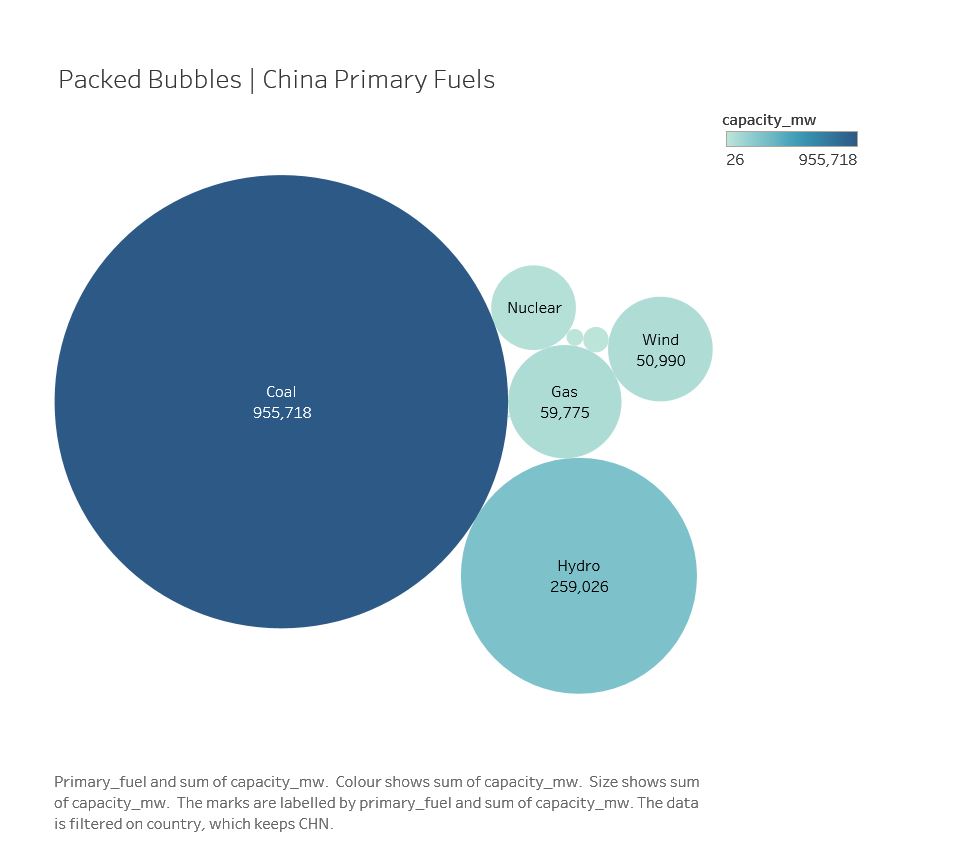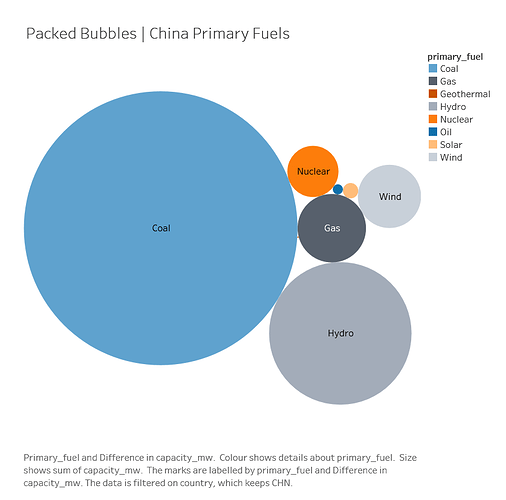Dear all,
I’m studying at Swansea University Computer Science and I’ve been asked to produce some visualisations for global Power Plants. Please find below one of my visualisations and do feel free to add any comment.
Thank you.
Image:
Description
Visual Design Type: Packed Bubbles
Name of Tool: Tableau
Country: CHN
Year: All years of the dataset
Visual Mappings:
: * colour: colour mapped the Primary source of energy in China.
: * shape: each circle represents a type of Fuel
: * size: the size of each circle is based in the Capacity Produced from the specific Fuel
Unique Observation:
: From the visualization, we can see China’s Primary Fuels
i.e. we can see that China is producing the most its energy
from Coal, Hydro and Gas.
Data Preparation:
: Transforming the CSV file to the XLSX file
Source : http://datasets.wri.org/dataset/globalpowerplantdatabase
Questions:
Do you understand what the visualisation shows?
Is there any other visualisation map type more suitable for this case?
Is the colour map optimal?
Should I add any additional label?


